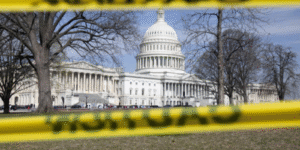US-China Trade Tensions Reshape Global Clean Energy Supply Chains
The Facts -
- US-China trade tensions boost clean energy investment in third countries.
- Third countries face risks due to US policy shifts on clean energy trade.
- US should clarify tariff policies to encourage third-country clean energy ties.
Over the past decade, the landscape of the global clean energy market has undergone significant transformation, driven largely by evolving US-China trade relations. Amidst these tensions, third countries have emerged as key players, capitalizing on opportunities while navigating the risks posed by geopolitical shifts.
The Shifting Dynamics of Clean Energy Supply Chains
In response to strained US-China trade relations, investments in clean energy technologies have surged in third countries, reshaping global supply chains. As the US seeks to minimize its reliance on Chinese clean energy products, third countries have strategically positioned themselves to benefit from the strategic competition between the US and China. However, this strategic positioning is fraught with risks, particularly as US trade policies evolve. More information.
China's dominance in producing intermediary and finished products for global solar, wind, battery, and electric vehicle (EV) supply chains is evident. As the largest producer, China's influence has significantly shaped the clean energy sector's geographic distribution. The US, meanwhile, is actively working to establish alternatives to China-centric supply chains, which could involve clarifying policies on transshipment and duty evasion, as well as setting tariff-rate quotas on clean energy exports from countries with strong Chinese investments.
Impacts on Third Countries
Economic Opportunities and Challenges
In the face of US market barriers, Chinese manufacturers have increasingly turned to markets in the Global South, where they have driven down costs and accelerated clean energy adoption. From 2021 to 2024, these emerging markets accounted for 70% of the growth in China's exports of solar, wind, and EV products. Notable examples include Pakistan's solar panel imports from China, which expanded the country's power capacity by one-third in 2024.
China's strategic initiatives, such as the Belt and Road Initiative and participation in the Regional Comprehensive Economic Partnership (RCEP), have facilitated trade partnerships and reduced trade barriers for clean energy technologies in regions like Southeast Asia. In 2025, China's Belt and Road Initiative saw green energy investments reach US$9.7 billion, adding an estimated 11.9 gigawatts of renewable energy capacity.
Trade Partnerships and Concerns
Amid ongoing trade tensions, third countries are keen to capitalize on Chinese investments. For instance, Indonesia has attracted significant Chinese investment in its nickel sector by promoting local processing, crucial for EV battery production. Similarly, South Africa is prioritizing local value addition in its mineral sector through partnerships with China, aiming to enhance its role in the global clean energy transition.
However, relying on China's clean energy equipment and financing poses risks. With China investing billions in overseas clean energy projects, countries dependent on Chinese imports face potential supply chain disruptions and economic coercion.
US Response and Strategic Implications
Trade Policies and Tariff Strategies
US policymakers are exploring ways to bolster clean energy supply chains independent of China. Tariff-rate quotas and clear definitions of transshipment policies could offer third countries incentives to contribute more to clean energy supply chains, as demonstrated by Indonesia's approach with nickel investments.
The US also seeks to collaborate with select third countries to address the concentration of global clean energy supply chains. This coordination aims to build resilience against disruptions and ensure fair market opportunities for various clean energy players.
As global clean energy dynamics continue to evolve, the interplay between US-China trade relations and the strategic roles of third countries will remain a focal point in shaping the future of clean energy investments and supply chains.
---
Read More USA Works News


